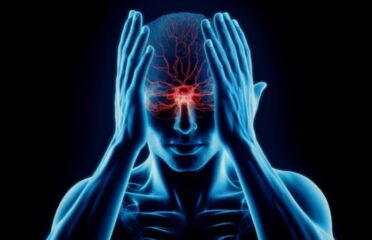Paresthesia
Overview

Paresthesia, commonly recognized as the fleeting "pins and needles" sensation, often occurs when pressure is applied to nerves, like when your arm falls asleep or you sit with your legs crossed. Generally painless and harmless, these transient sensations result from temporary nerve compression. However, it's crucial to note that persistent or recurrent paresthesia might indicate an underlying medical issue requiring attention. While the occasional tingling is typically benign, extended or frequent episodes should prompt a medical evaluation to rule out potential underlying conditions. Don't dismiss persistent paresthesia; consult a healthcare professional for a thorough examination and appropriate guidance.
Symptoms
These sensations result from underlying nerve compression, injury, or circulation problems, indicating potential nerve-related concerns.
Whether persistent tingling or sporadic prickling, experiencing paresthesia underscores the need for medical evaluation to identify and address the root cause.
Seeking professional attention is crucial for proper management and relief from discomfort associated with paresthesia.
While paresthesia may resolve independently, persistent or worsening symptoms necessitate comprehensive assessment and tailored interventions.
Recognition of these symptoms and timely intervention ensure optimal care and potential resolution of underlying issues causing paresthesia.
Causes & Risks
Chronic paresthesia can stem from various origins including:
- Nerve Damage, which often results from injury or accidents.
- Stroke or Mini-Stroke, which can cause brain damage due to interrupted blood flow.
- Radiculopathy, which is caused by compression of a nerve root, exacerbating chronic paresthesia.
- Neuropathy, which is generalized nerve damage contributing to persistent abnormal sensations.
- Pinched Nerve, which frequently occurs in the neck, shoulder, or arm, as a result of injury or overuse.
- Sciatica, which predominantly occurs during pregnancy and involves pressure on the sciatic nerve, causing numbness and pain in the back or legs.
- Recognizing these diverse triggers is crucial for effectively managing and relieving chronic paresthesia, highlighting the need for a comprehensive understanding of the underlying causes.
Test & Diagnosis
While paresthesia often resolves spontaneously, persistent numbness or recurring ""pins and needles"" sensations in any part of the body warrant medical attention.
Consulting your doctor is crucial; they will conduct a comprehensive evaluation, delving into your medical history and performing a physical examination.
Additionally, your doctor may recommend diagnostic tests to identify the underlying cause of paresthesia. These tests could involve X-rays, blood tests, or magnetic resonance imaging (MRI) scans.
The MRI, utilizing powerful magnets and radio waves, produces detailed images, aiding in precisely identifying factors contributing to paresthesia.
Timely medical intervention ensures an accurate diagnosis and tailored treatment for effective relief.
Treatment
While paresthesia often resolves spontaneously, persistent numbness or recurring ""pins and needles"" sensations in any part of the body warrant medical attention.
Consulting your doctor is crucial; they will conduct a comprehensive evaluation, delving into your medical history and performing a physical examination.
Additionally, your doctor may recommend diagnostic tests to identify the underlying cause of paresthesia. These tests could involve X-rays, blood tests, or magnetic resonance imaging (MRI) scans.
The MRI, utilizing powerful magnets and radio waves, produces detailed images, aiding in precisely identifying factors contributing to paresthesia.
Timely medical intervention ensures an accurate diagnosis and tailored treatment for effective relief.
Living With
Living with paresthesia, characterized by tingling, prickling, or numbness sensations, presents diverse challenges. Abnormal sensations like tingling, burning, or "pins and needles" feelings can affect different body parts. Various factors, including nerve damage, compression, circulatory issues, or underlying conditions like diabetes or multiple sclerosis, may cause paresthesia. It can impact daily activities and lead to discomfort, reduced sensitivity, or challenges with fine motor skills. Symptoms may be localized or widespread. Identifying and treating underlying causes, such as diabetes or nerve compression, is crucial for managing paresthesia. Treatment involves medications targeting nerve pain, physical therapy, lifestyle adjustments, and addressing root conditions to relieve symptoms, enhancing the overall quality of life.
Complications
-Reduced Sensation: Paresthesia may cause decreased or altered sensation, impacting the accuracy of detecting temperature changes, pain, or touch.
-Risk of Injury: The condition increases the risk of accidental injuries as individuals may not feel sensations signaling potential harm, such as burns, cuts, or traumas.
-Loss of Coordination: Paresthesia affecting limbs or extremities can result in a loss of coordination, impacting fine motor skills and precise movements.
-Difficulty Performing Tasks: Altered sensations may pose challenges in performing activities requiring manual dexterity or precise sensation, affecting daily functioning.
-Nerve Damage Progression: Persistent or untreated paresthesia might lead to nerve damage or worsening symptoms if the underlying cause remains unaddressed.





